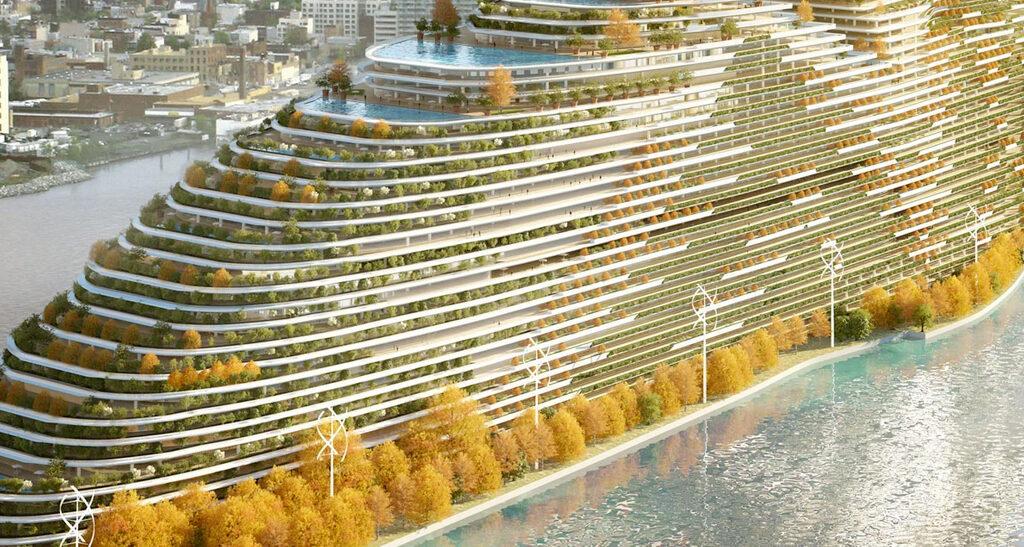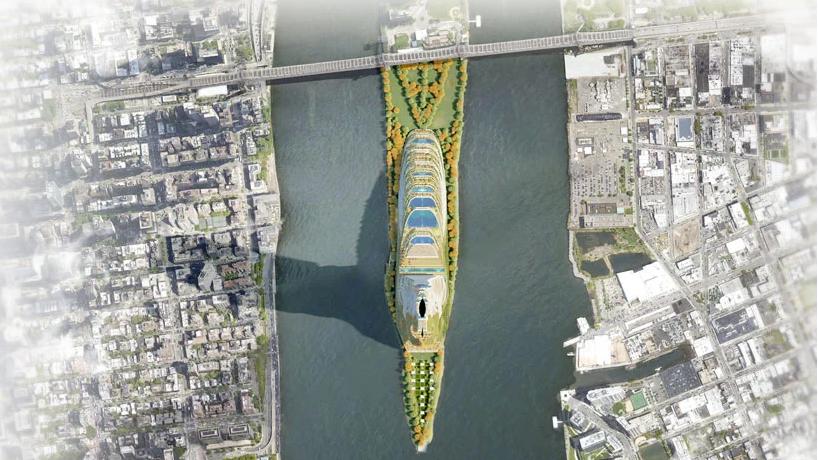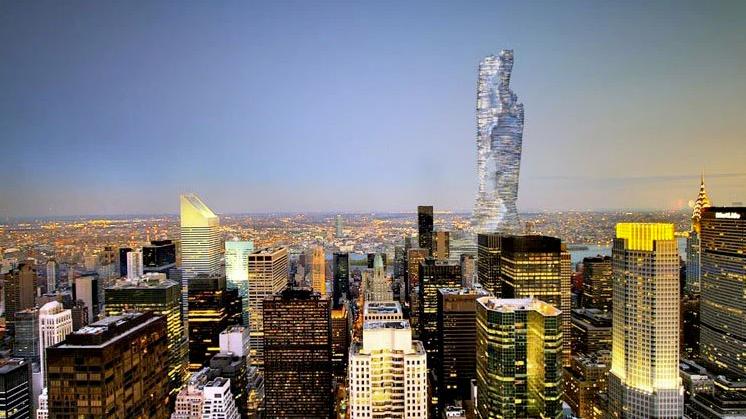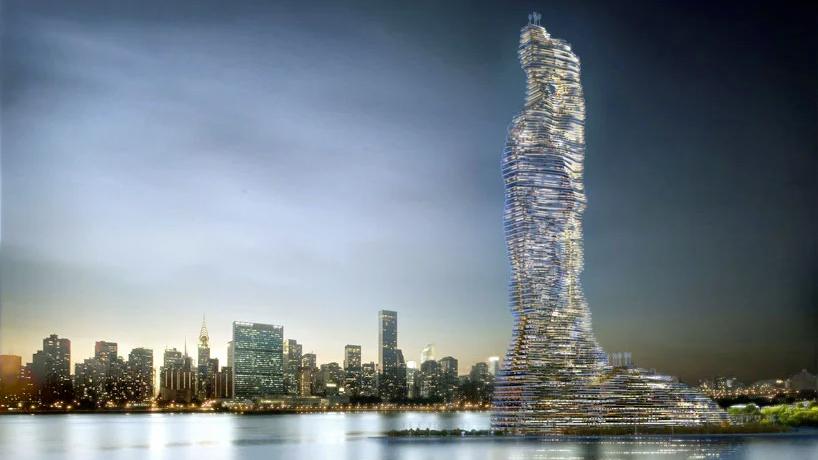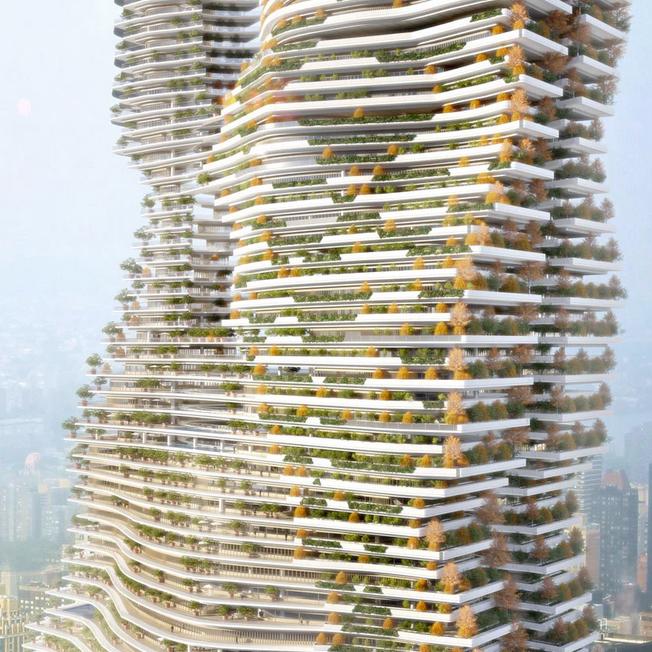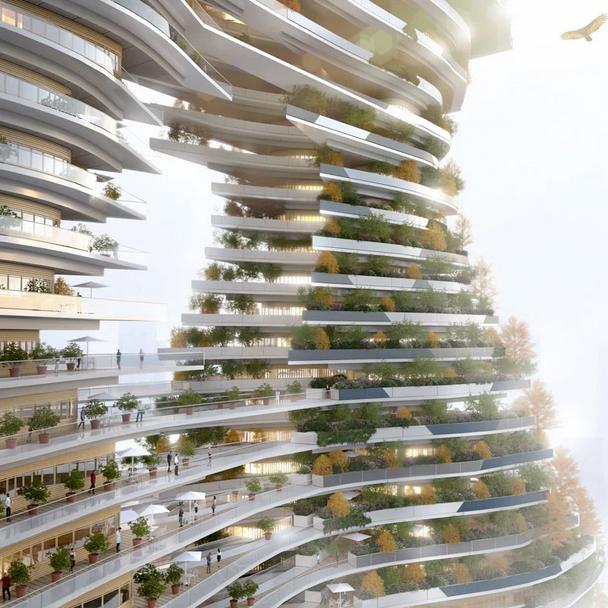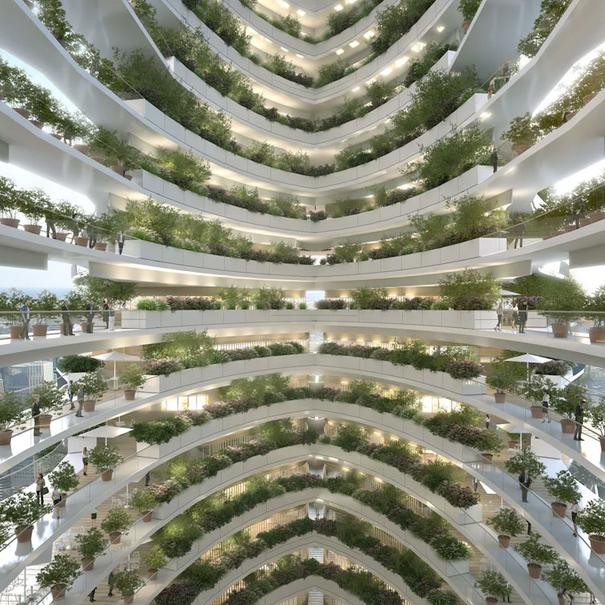The carbon-catcher of New York
At a height of 737 metres, this new building planned for New York will soar into the sky in the shape of a mandragora plant. Consuming the city’s carbon emissions in the process.
Mandragora – also known as mandrake – is a plant that grows in southern countries and whose ingredients have long been used as a natural remedy. The plant is especially used to treat problems of the digestive organs such as the liver, gall bladder and intestines. And mandragora even has an effect on gout and rheumatic disorders.
Mandragora to fight carbon
According to plans by Paris-based architecture firm Rescubika, mandragora will soon be used to heal the lungs of New Yorkers. The French studio recently presented a design for a gigantic building called “Mandragore”, which can literally consume the carbon emissions of the Big Apple.
What sounds futuristic at first is a smart idea, though. Put simply, the architects intend to create a skyscraper with a height of 737 metres on Roosevelt Island which would absorb more CO2 than it releases. It is a categorical response to questions raised by the vision of a climate-neutral “city of tomorrow”, according to the official statement. After all, New York also intends to reach its climate targets and achieve carbon neutrality by 2050. So it’s definitely time to start making specific plans.
Integrated carbon sink
The extent of concrete developments in the “Mandragore residential tower” project remains unclear to date. However, some of the developers’ ideas sound quite feasible and have attracted considerable attention. Above all, there are specific reflections on how carbon can actually be absorbed from the air. The architects talk about creating the building with a “carbon sink”.
Broadly speaking, this is a reservoir that absorbs more CO2 than it releases, thus effectively reducing CO2 from the atmosphere. Above all, this is to be achieved by employing wood materials and various measures for decarbonizing the air.
Huge passive energy systems
These especially include passive energy systems, such as huge earth-air heat exchangers. Using underground pipes, heat is captured from places where it is not needed, and passed to other places that need to be warmed. This system provides a warm indoor environment during the winter and helps to cool the rooms in the hot summer months.
Energy sobriety
These innovative carbon-catchers have integrated a concept called “energy sobriety” into their project. This idea promotes changes in individual lifestyles in order to achieve carbon neutrality.
In other words: Measures that enable people to produce less CO2 are already adopted during the planning stage. One simple example is the integration of office space into each apartment to allow the Mandragore inhabitants to work from home. This reduces commuter traffic and therefore also CO2 emissions.
It goes without saying that the building itself is sustainable to the greatest possible degree. Distributed across its 160 floors, 36 wind turbines will generate electricity. Large sections of the facade are dedicated to photovoltaic panels – 7,000 m2 to be precise. The outdoor vegetation is particularly sensational. The building was specifically designed to allow as much greenery as possible. According to the architects, there will be 1,600 trees and 24,500 m2 plant walls. Purifying New York’s air is essentially their responsibility. This is also the reason for the structure’s sinuous shape, which is intended to resemble the mandragora root and generate more room for plants.
However, the plant-like shape is also intended to remind us of the fact that we must preserve our environment in order to live in symbiosis with our planet.
But careful, mandragora is poisonous…
That’s all very well. What the architects have failed to mention – besides the mandrake’s healing powers – is that the plant has toxic properties. An overdose causes symptoms of poisoning similar to those familiar from belladonna, or deadly nightshade. Let’s hope this isn’t a bad omen…
Text: Johannes Stühlinger
Translation: Rosemary Bridger-Lippe
Images: Rescubika
